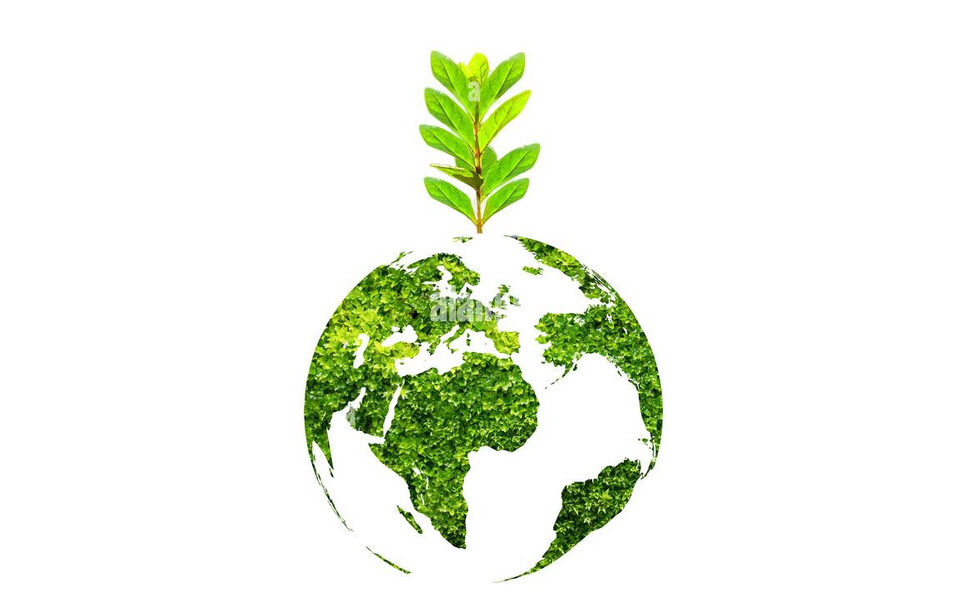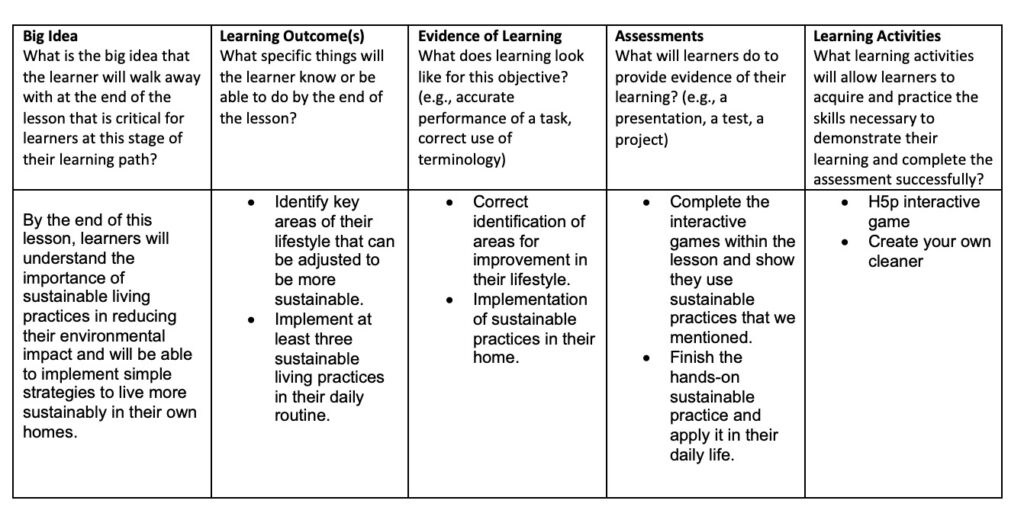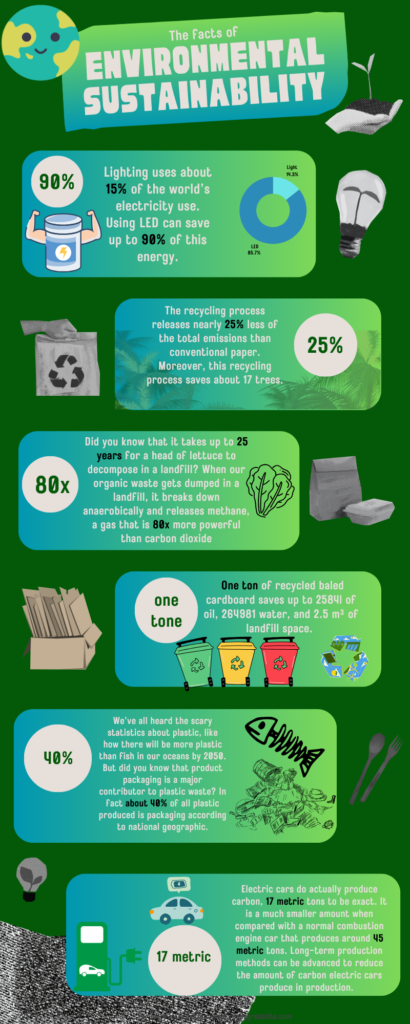
About Our Project
After a detailed review of the project description, our team decided to conduct the project in three phases: deciding the direction, dividing the workload, and polishing the final work. During these phases, group members gather and research information and materials related to the topic, and collaborate to form a lesson that is completed and aligned with the topic.
Our discussions include:
- Identifying the target audience group;
- Deciding how to present our study materials, which may include reading resources, video resources, infographics, interactive games, and hands-on practices;
- Designing sections/components of the lesson that offer a cohesive and comprehensive learning experience.
Throughout the process, group members regularly check on progress and stay connected with each other, ensuring that while we work separately, we are moving in the same direction and are committed to supporting each other.
Phrase 1
Task: Brainstorm on topics from our areas of interest, knowledge backgrounds, and fields of study.
Goal: Find a topic that is specific, related to daily life, and educational.
Outcome: “Sustainable Practices for a Better Home”.
Phrase 2
Task: Form the structure of our lesson design; divide the project into smaller pieces for everyone to work on.
Goal: Create a holistic and aligned lesson plan; put multimedia tools into practice. Outcome: Learning materials are designed to be presented through video, infographics, LinkedIn articles, and interactive mini-games.
Phrase 3
Task: Final document organization; project reflection; project polishing.
Goal: Create a holistic and aligned lesson that follows the planner; ensure completeness and coverage of the required aspects for the project.
Outcome: Finalized work.
Sustainable Practices for a Better Home
Overview
This course is designed to provide students with an understanding of sustainability and its practical applications in our daily lives.
By the end of the course, students will have a solid understanding of sustainability issues and be equipped with practical knowledge and strategies to make more sustainable choices in their own lives. This course is a must for anyone interested in playing a part in ensuring a sustainable future for our planet.
Learning Objectives
Students will learn about some facts about environment and sustainability, and the concept of a circular economy, which aims to design out waste and keep products and materials in use for as long as possible.
Practical aspects of sustainability are also covered, such as energy-efficient practices, water conservation, and the impact of dietary choices on sustainability. Students will gain insights into how small changes, like switching to LED lights or adopting a plant-rich diet, can make a significant difference in reducing emissions and conserving resources.
Lesson Planner

Facts about environment & sustainability
What is sustainable living?
Achieving sustainable living involves making decisions that try to lessen the environmental impact by implementing constructive actions to fight climate change and reduce environmental harm. It is an approach of limiting the environmental harm that our lifestyle choices can cause by lowering our carbon footprint and making better use of the resources found on Earth.Sustainability is the practice of making decisions now that will benefit the environment in the near future . In order to make sure that the future generations will have a safe and healthy world to live in, it is necessary to consider their requirements(What Is Sustainable Living? Definition & Examples | Inspire Clean Energy, n.d.)
Environmental Sustainability

Circular economy
The perfect way to reuse products and have a long product cycle is through a circular economy. Also, doing this allows you to save thousands on the annual budget for the average-size household.
Link: https://sustainability-success.com/circular-economy/
Sustainable Practices and At-Home Practice Examples
6 Rs Of Sustainability: EASY Steps For A Sustainable Lifestyle
The 6Rs of sustainability are: rethink, refuse, reduce, reuse, repair, recycle. The 6rs definition can help you to stay on the right path during your eco-living journey.
“Rethink” can be expressed in two words: think again! It is an invite to reassess an impending choice to make sure that you make the right decision(Simon, 2024). “Rethink” is a reminder to be more rational in our decisions and consider the environment before taking action.
“Refuse” means that you should avoid purchasing or even getting for free something that is not essential(Simon, 2024). The concept should be interpreted in a broad way: by refusing anything that is unnecessary, including items that have excessive packaging, single-use items, or products that are not energy efficient(Simon, 2024).
“Reduce” means to cut down on the number of products you buy and use (Simon, 2024). Do you really need that wardrobe full of clothes that you almost never wear? Probably not, in this case, you should consider reducing the number of things you purchase and eventually donate or sell the items you are not using.
“Reuse” means that you should consider potential ways to use again an old item instead of getting rid of it (Simon, 2024). This new use could be to fulfill the same task or something completely different. By reusing, instead of throwing something away, you are able to make use of an item over and over again, potentially for multiple years and to benefit different areas of your life(Simon, 2024).
Upcycling Old soap bottles
“Repair” means that, if something is broken, you should first consider repairing it instead of replacing it with a new product (Simon, 2024). Ask yourself: can I or someone else fix this? Try to use products for as long as you can and dispose of them only if there’s really nothing else you can do. “Repair” is one of the last steps you should consider, and only after you already did “rethink”, “refuse”, “reduce”, “reuse” an item(Simon, 2024).
“Recycle” is defined as the return of items to an earlier stage of the production cycle: usually as raw materials (Simon, 2024). You should consider this final step only if you can’t reuse or repair the product in the first place. This is why “recycle” is the last of the 6 Rs of sustainability(Simon, 2024).
The economic aspect of recycling is also very important because it will define what is possible to recover and what is not (Simon, 2024). For example, most electronic devices have some tiny amount of gold in their components, but this is usually not recovered because it would cost more to do that than to get the same quantity of gold from the market. This is not just an economic reason, usually, when recycling is not economically viable it would cost more energy to extract that resource from the item than to extract it from the planet.
Waste Sorting
Examples of other items that could be recycled but where recycling is not yet as common:
- Electronic devices (also known as WEE: Waste of Electric or Electronic devices) can be partially recycled in specialized facilities.
- It is estimated that about 50% of the fabrics that we throw away every year could be recycled. Unfortunately this is still not a common practice (Simon, 2024).
Fig 6. This image displays four different sorting trash bins Source: “ displays four different sorting trash bins” prompt, Stable Diffusion, version 2, OpenCLIP, 8 April. 2024, https://stablediffusionweb.com.
Five Things You Can Do To Help The Environment

Figure 5: This image displays tips on a topic: Five Things You Can Do To Help The Environment” with the content of: Recycle your waste, use less paper, stop using plastic bags, free of toxic chemicals, and avoid products which contain microbeads. (From New Frontiers Marketing)
Hands-on Practice
Making your own cleaning product
Instead of disinfecting your home with toxic chemicals, consider making your own low-waste cleaning supplies at home. Vinegar is a great cleaner for most surfaces (avoid marble and limestone) and smells much better when infused with citrus peels (The Earthling CO., 2021).
Instructions:
- Fill a Mason jar with vinegar about two-thirds of the way full. See figure 1.2
- Add citrus peels and let them infuse for three to four weeks. See figure 3
- Strain out the citrus peels and fill a spray bottle with one part water, one part citrus-infused vinegar (The Earthling CO., 2021). See figure 4
Fig. 1 This image displays an empty mansion jar
Source: “a mansion jar” prompt, Stable Diffusion, version 2, OpenCLIP, 8 April. 2024, https://stablediffusionweb.com.
Fig. 2 This image displays a bottle of white vinegar
Source: “a bottle of white vinegar ” prompt, Stable Diffusion, version 2, OpenCLIP, 8 April. 2024, https://stablediffusionweb.com.
Fig. 3 This image displays citrus peels in a mansion jar
Source: “citrus peels in a mansion jar” prompt, Stable Diffusion, version 2, OpenCLIP, 8 April. 2024, https://stablediffusionweb.com.
Fig. 4 This image displays spray bottle labeled with “HomeMade Disinfector”
Source: “ a spray bottle labeled with :HomeMade Disinfector
” prompt, Stable Diffusion, version 2, OpenCLIP, 8 April. 2024, https://stablediffusionweb.com.
Analysis
This lesson is structured to offer diverse methods of engagement, representation, and action throughout, catering to the unique pace of each learner. It empowers learners by giving them control over their learning journey. To accomplish this, we have designed the lesson to deliver content through various multimedia platforms and formats such as videos, H5P interactive games, reading material links, visual instructions, and data infographics.
In the process of structuring this lesson, we have carefully considered instructional design principles. These principles guide us in the distribution of multimedia learning tools across various sections or topics, thereby establishing a logical flow that reinforces the learning outcome. We have organized the content based on its relevance to specific topics, such as environmental facts and sustainability, as well as practical exercises and examples that can be done at home. It is in these sections that we have incorporated the H5P interactive game and infographic. These learning activities are designed to engage learners and aid them in achieving the intended learning outcomes.
The learning materials are organized by topics, enabling learners to choose their preferred learning path, whether it’s from theory to practice or from fact to application. All materials are clearly labeled, and images are provided with titles and alternative descriptions to cater to learners at different levels.
Finally, the lesson includes hands-on practice to boost participation, with the aim of enhancing the learning experience and outcomes.
The lesson incorporates cognitive load theory, which guides us in dividing the course into three distinct parts: introduction, explanation, and interaction. Recognizing the constraints of working memory, it’s crucial to introduce cognitive load theory to ensure the efficiency of the lesson. Overloading learners with too much information at once can lead to forgetting or misunderstanding. The interactive game of “waste sorting” is behalf of the cognitive load theory. We select a specific topic for learners – waste sorting, using the attractive method of drag and drop to enhance the attention of learners. Within the game, learners are tasked with matching word boxes to corresponding categories. The feedback provided at the end allows learners to assess their understanding and identify areas for improvement. This section of the lesson provides clear instructions, guiding learners on what to do and how to do it, rather than leaving them to discover or construct information independently.
Contributions
Jeremy– Created interactive video on upcycling, editing, lesson plan, Pictures, proposed (sustainability in our home) idea,lesson planner.
Daisy– Designed the layout and structure of the lesson; documented project plan; fulfilled each component with necessary materials; placed the multimedia resources into the appropriate section; created the hands-on practice with AI drawing tool; organized the references and made reflections on Universal Design for Learning and Instructional Design theory.
Rick– Created interactive game “waste of sorting,” picture, editing, analyzed by cognitive load theory, blog formatting.
Romina– Infographic, editing and analyzed Facts about environment & sustainability
References:
Simon. (2024, April 4). 6 Rs Of Sustainability: EASY Steps for a Sustainable Lifestyle. Sustainability Success. https://sustainability-success.com/6-rs-of-sustainability-lifestyle-9-3-rs/
The Earthling CO. (2021, August,17). 12 Sustainable Practices You Can Do at Home. The Earthling Co. https://theearthlingco.com/blogs/news/sustainable-practices-at-home
What is Sustainable Living? Definition & Examples | Inspire Clean Energy. (n.d.). https://www.inspirecleanenergy.com/blog/sustainable-living/what-is-sustainable-living
CSERC. (n.d.). Sustainability through my accountability. Retrieved from https://www.cserc.org/blog/sustainability-through-my-accountability/
Planetarian Life. (n.d.). Repair, repurpose, refurbish, recycle. Retrieved from https://planetarianlife.com/blog/repair-repurpose-refurbish-recycle/
Rethink UW. (n.d.). About. Retrieved from https://www.rethinkuw.org/about
Leave a Reply
You must be logged in to post a comment.